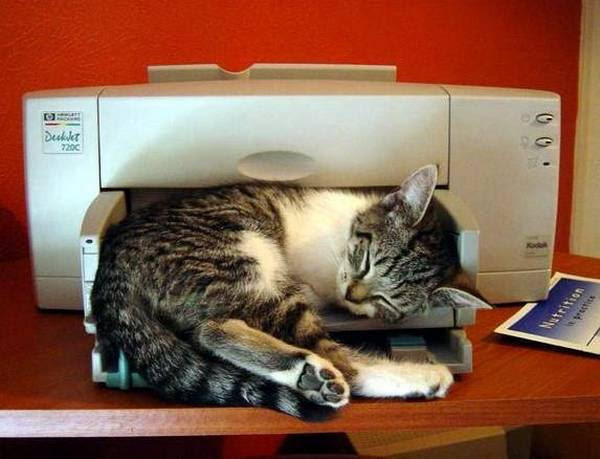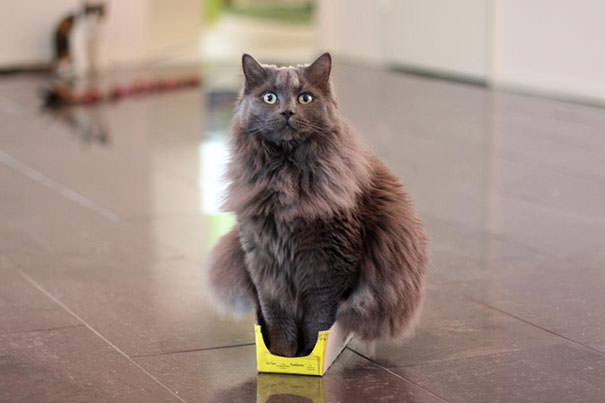“What’s more, a new study has found that pet cats will also spontaneously sit inside an optical illusion that merely looks like a square.”
THE FOLLOWING WRITTEN CONTENT BY NELL GREENFIELDBOYCE

If you’ve spent any time around cats, you’ve probably noticed that they love to curl up in small, cozy boxes. What you may not know is that they’ll also go sit inside the two-dimensional outline of a square box on the floor. What’s more, a new study has found that pet cats will also spontaneously sit inside an optical illusion that merely looks like a square.
Believed to be the first of its kind, the study enlisted volunteers to observe cats in their homes, a strategy to avoid what has historically been the main impediment to studying feline cognition in the lab — cats’ notoriously uncooperative nature.

“Cats are funny, cats are weird and quirky, and we love them for it. And that makes them hard to study in some ways, because we are often so reliant on training paradigms and cats aren’t very motivated to be trained,” says Gabriella Smith, an animal behavior researcher who currently works with the Alex Foundation, an avian cognition lab, and is the lead researcher on the study.
While there’s lots of research on dog cognition, not many scientists have attempted to explore the inner world of cats. For example, no one knows exactly why cats seem compelled to sit inside small boxes.
“There are two kinds of very informal theories as to why they may sit in a box,” says Smith. One is that cats crave a comforting pressure on their bodies that reminds them of when they were kittens, surrounded by their littermates. Another is that cats have an attraction to potential hiding spots because of the way they ambush prey while hunting.
“But this doesn’t explain why this translates to a two-dimensional shape on the floor,” notes Smith, explaining that a cat will also go sit inside a square shape created on the floor with masking tape, for example.
She wondered how cats would react to what’s known as the Kanizsa contour illusion, which uses four Pac-Man shapes in an arrangement that creates the appearance of a square.
“Cats behave most normally when they are in natural settings,” notes Smith, so she and her colleagues devised an experiment that let volunteers test their own cats at home in a standardized way and then send in the results. Read more from NPR.





